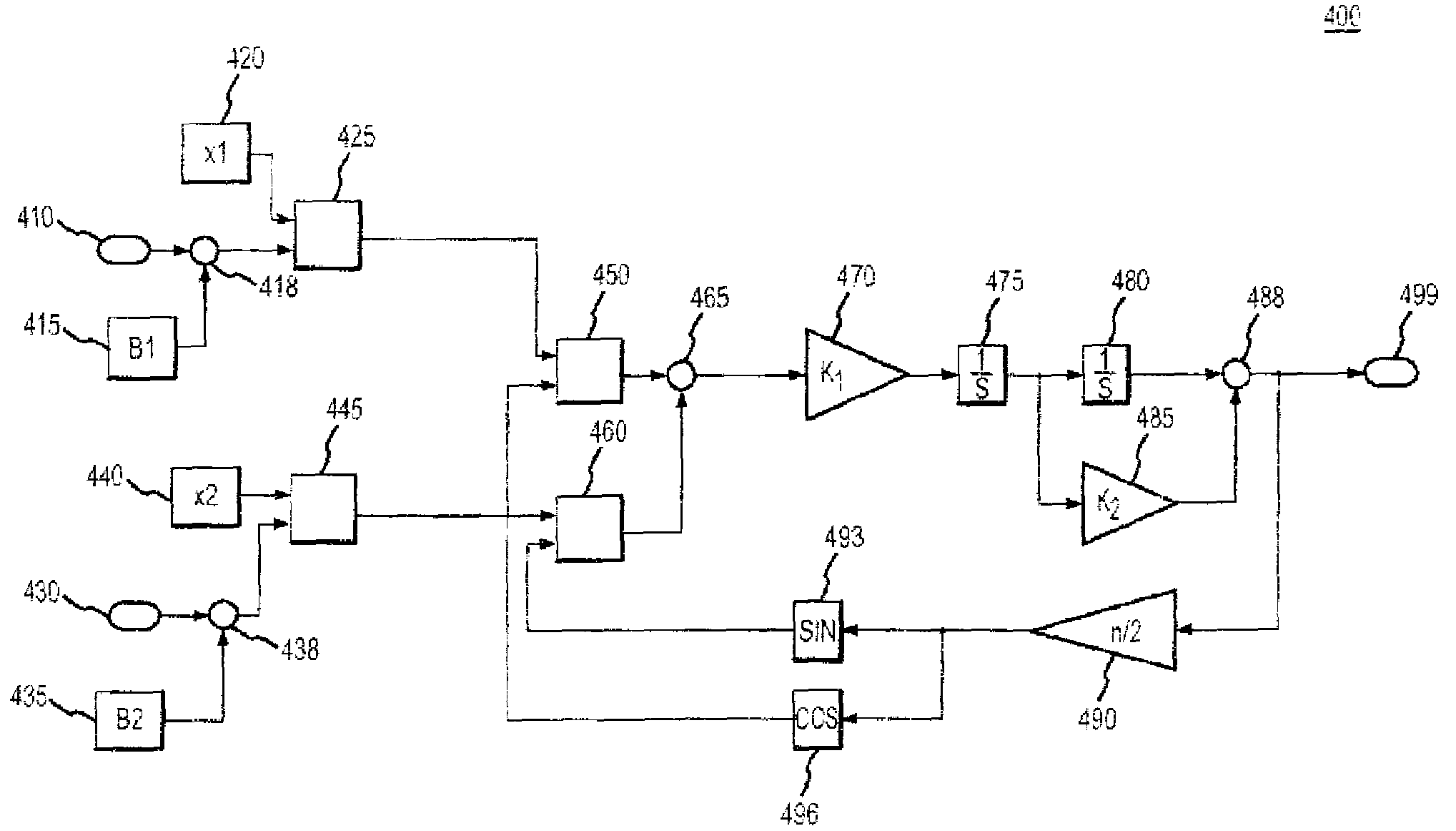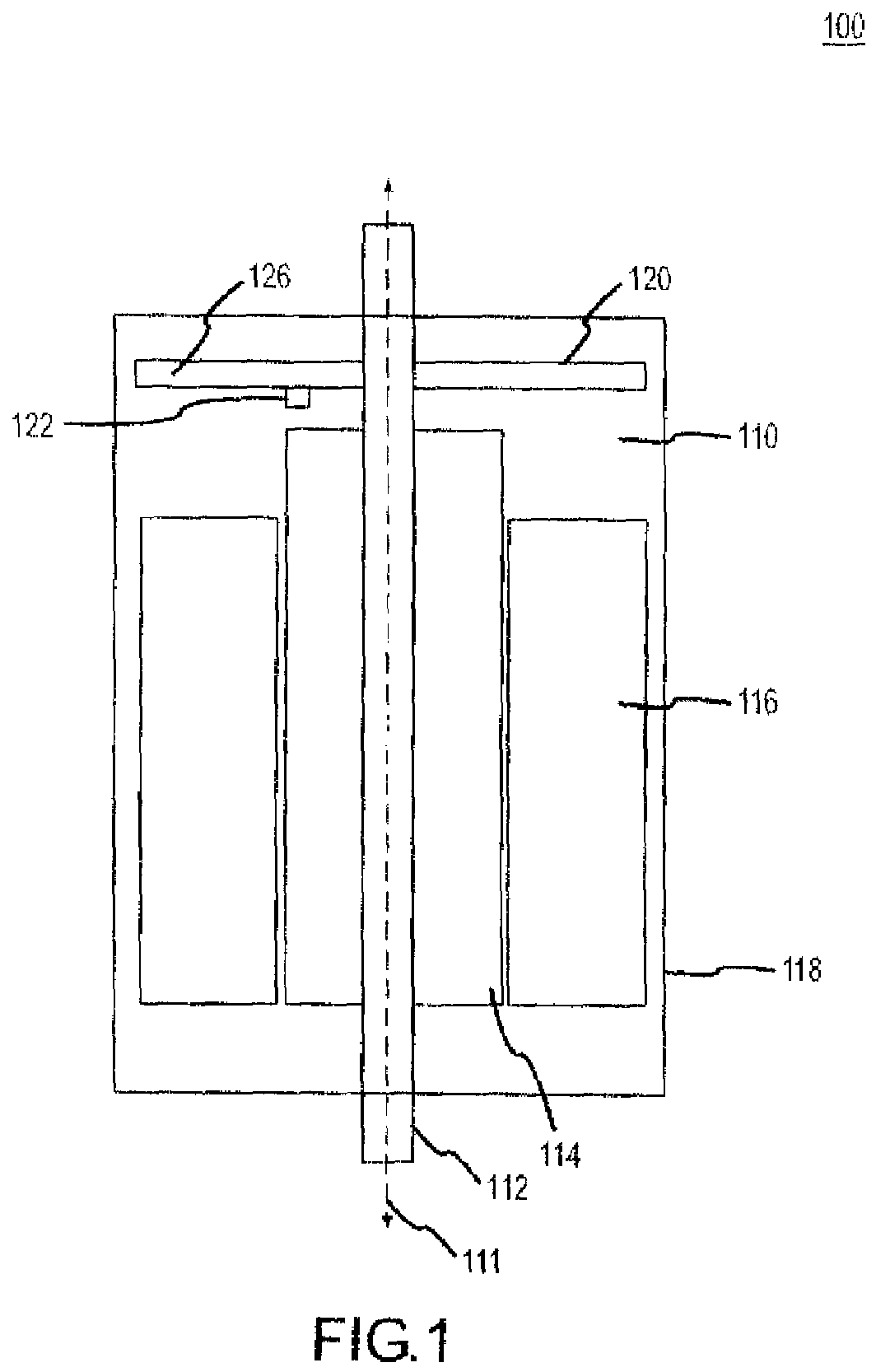System and method for determining angular position and controlling rotor orientation
a technology of angular position and rotor, which is applied in the direction of motor/generator/converter stopper, dynamo-electric converter control, instruments, etc., can solve the problems of inability to provide accurate rotor position sensing, inability to adapt other motors to utilize sensorless technologies, and inability to solve the problem of prohibitively expensive solutions
- Summary
- Abstract
- Description
- Claims
- Application Information
AI Technical Summary
Benefits of technology
Problems solved by technology
Method used
Image
Examples
embodiment 100
[0032]As generally depicted in FIG. 1, a representative embodiment 100 of the present invention provides a side view of motor 110 and circuit card 120 in which the circuit card 120 is configured to produce a signal in response to a change in the rotational position of rotor 112. Motor 110 may comprise rotor shaft 112, motor field pole magnets 114, stator 116, and housing 118. Rotor shaft 112 may be configured to rotate about its principal axis 111 within housing 118 in response to the rotating magnetic field of stator 116 and the effect of this field on motor field pole magnets 114. Circuit card 120 may comprise a sensor module 122 coupled to circuit card body 126. Sensor module 122 may be configured to produce a signal in response to rotation of rotor shaft 112 and communicate this signal to a position determination module.
[0033]Motor 110 may be configured to convert electrical energy into kinetic energy. Alternatively, conjunctively or sequentially, motor 110 may be suitably confi...
embodiment 400
[0053]A representative embodiment of the position determination module 335 as shown in FIG. 3, is depicted in FIG. 4. The representative embodiment 400 provides a system for processing sensor module output via a recursive frequency domain function. A representative recursive frequency domain function may comprise the steps of producing a signal from a pair of HEDs, scaling the signals, and applying a mathematical error operator on the scaled HED signals and the previous estimated position in order to re-iterate the estimated position.
[0054]In a representative embodiment, sensor module may comprise a first HED and a second HED. The first HED may produce a first signal 410 and the second HED may produce a second signal 430. First signal 410 may be adjusted by an offset factor 415 and a scale factor 420. Likewise, second signal 430 may be adjusted by an offset factor 435 and a scale factor 440.
[0055]Processing of the first signal 410 and the second signal 430 may proceed in accordance ...
PUM
 Login to View More
Login to View More Abstract
Description
Claims
Application Information
 Login to View More
Login to View More - R&D
- Intellectual Property
- Life Sciences
- Materials
- Tech Scout
- Unparalleled Data Quality
- Higher Quality Content
- 60% Fewer Hallucinations
Browse by: Latest US Patents, China's latest patents, Technical Efficacy Thesaurus, Application Domain, Technology Topic, Popular Technical Reports.
© 2025 PatSnap. All rights reserved.Legal|Privacy policy|Modern Slavery Act Transparency Statement|Sitemap|About US| Contact US: help@patsnap.com



